The term stadium has been derived from the Greek measurement term of Stadion or the Stade (Measuring one length). Stadiums were developed and evolved from Roman Greek times due to their immense importance to sports competition and pageantry. Stadium architecture is one of the best typologies showcasing larger-scale design and architecture. Architecture has come a long way concerning building stadiums for sports and other events; since its increased popularity, architecture has had to evolve accordingly. Stadium architecture focuses on creating architecture that showcases togetherness, teamwork, and ambition by creating a space that celebrates meeting and greeting every player, member, spectator, and individual in the vicinity.
Some iconic stadium architectural examples have redefined the boundaries and lines of architecture and construction. Stadium architecture reflects and echoes the aesthetic approach and a detailed technical approach to address large-scale issues of hosting many spectators (capacity), large structure designs, construction techniques, etc. The architectural typology of stadium design focuses on achieving and creating a perfect balance of aesthetic and functional aspects of design and construction. The implications of new modern technology have impacted stadium architecture in evolving into a futuristic and modern architecture.
Listed below are eight such iconic stadium architectural masterpieces around the world:
1. Lusail Stadium
Location: Qatar, Dubai
Construction: 2022
Architect: Foster + Partners, Populous
Engineering: Arup
A modern and bold stadium that echoes contemporary architecture with historical locations in Qatar designed by the renowned architecture firm Foster + Partners, in collaboration with Populous and Arup. It is one of the largest stadiums in Qatar and was the venue for the world-renowned FIFA World Cup (2022). The shimmering golden exterior in Lusail City center is situated 15 kilometers North of Doha. Designed to hold a capacity of 8,000 individuals, the iconic form of the structure is inspired by the bowls and vessels in the Middle East. It showcases its intricate and thoughtful design and planning that emphasizes the importance of climate and cultural aspects.
The Lusail Stadium is also an example of sustainable architecture due to its high-performance façade and innovative design elements that help reduce energy consumption. The exterior façade and design of the stadium echo vernacular architecture and futuristic design. The exterior façade of the stadium acts as a screen that helps keep the structure comparatively cooler. Triangular openings are created within the entire façade, acting as a perforated screen, providing shade and filtering light entering the structure. The design and performance of the stadium have earned it a five-star rating for the Global Sustainability Assessment System since it has reduced its energy consumption through high-performance facades and sustainable roofing systems. The stadium has an intricate and elaborate design. Lighting design also plays an important role, emphasizing features by strategically placings around the stadium and highlighting them to visitors.
2. Beijing National Stadium
Location: Beijing, China
Construction: 2008
Architect: Herzog & de Meuron, Arup Sport, China Architectural Design & Research Group
Artistic Consultant: Ai Weiwei
The Beijing National Stadium, located in Northern Beijing (China), was designed by the architecture firm Herzog & de Meuron. The primary aim of the project during the designing process was to create an urban realm that attracts the public and brings new life to this part of the city. The national stadium is one of the biggest stadiums in Beijing, known for hosting enormous events such as the Summer Olympics (2008). The steel structure of the stadium shell is recognized as one of the most complex stadiums ever built, an example of marvelous architecture and engineering marvels.
The Beijing National Stadium is nicknamed as recognized as a “Birds Nest” due to its iconic and unique form of structure. The saddle-shaped stadium is a steel structure with interlocking parts resembling the lattice of twigs, earning the Birds Nest nickname. The stadium covers an enormous area of 204,000 square meters with a capacity of hosting 91,000 individuals. An organic shape has evolved through a thoughtful and logical approach to design and construction. It is situated in an earthquake-prone zone; hence, it was essential to be designed so that the stadium could withstand earthquakes at a seismic level of 8. The stadium was designed efficiently to ensure that the spectators experience an optimal view from anywhere within the stadium, and the ETFE roof cladding helps maintain the atmosphere. The structure comprises two shells; an independent red concrete seating bowl and the outer nest-like steel frame (50ft distance from the inner shell).
3. Zaozhuang Stadium
Location: Shandong, China
Construction: 2017
Architect: United Atelier – Shanghai United Design Group Co Ltd.
The Zaozhuang Stadium is situated at the city center of the Cultural and Sports Park within the new city center. The stadium, with a capacity of 40,000 spectators, hosts various citizen activities and national and individual international competitions. The stadium was designed as a part of the local civic center project that is laid out in symmetry, forming the north and south axis of the city with the Municipal Plaza and the Fengming Lake. The stadium and other facilities are scattered within this green city park environment. The stadium is situated in the southernmost part of the new city axis, connecting other sports venues, squares, and primary urban spaces.
The stadium is known to have received many design awards due to many design factors of application of sustainability, complex yet intricately thought architecture, and structure. Chinese often consider red lanterns a symbol associated with family reunion and prosperity, and the architecture and form of the stadium were conceived with the same idea. The organic wave-like form of the stadium has been supported by advanced and complex cross-cable support and structural systems. It is among the first structures that utilize pre-stressed cross-cable membranes, siphon drainage technology, curved structural systems, etc. The roofing system utilizes a spoke-shaped oblique cross-light cable film system formed with the tension of the PTFE membrane material. The tension formed with the membrane material causes radial tension of the cable bundle, creating a light and beautiful overall complex structure.
4. Tottenham Hotspur Stadium
Location: Tottenham, London (UK)
Construction: 2019
Architect: Populous
The Tottenham Hotspur Stadium, designed by the architectural firm Populous, is situated in Tottenham, London (United Kingdom). The 62,062-seat capacity stadium hosts various football and NFL games and was one of the first custom-built structures. The local area’s industrial heritage has inspired the design of the entire stadium. The stadium is designed to create the best match day atmosphere in the world, where uninterrupted sight within the spectators stands and brings spectators closer to the pitch comparatively.
The structure consists of an enormous retractable roof pitch that can be opened or closed based on weather conditions, hence the pitch can be used for various sports activities. The stadium has an iconic and unique shimmering aesthetic through the application of 4,800 perforated metal panels that reflect the light, creating an iconic glitter effect. The exterior panel of the façade wraps and folds around the stadium that arches upwards, revealing a single-tier homestand with curved retractable roofing. The stands of the stadium have been tiled at an angle of 35 degrees, the steepest angle used in the UK, which is implemented to create a tighter and closer atmosphere focused towards the southern (Home end). The roofing system of the stadium is composed of five separate sections that can be opened or closed when required.
5. Optus Stadium
Location: Perth, Australia
Construction: 2018
Architect: Cox, HKS, and Hassell
The Optus Stadium was referred to earlier as the Perth Stadium, and it is located in the suburbs of Burswood of Perth (Australia). It is a multipurpose stadium with a total spectator capacity of 61,266 (Extended to 65,000 seats for rectangular sports), making it the third-largest stadium in Australia. Designed by COX, Hassell, and HKS Sport and Entertainment, who were awarded winners of the competition with the West Australian Government to design a publicly funded stadium. The world-class stadium is known for hosting various sports and entertainment events such as the Australian Football League, cricket, soccer, rugby leagues, concerts, etc.
The 42-meter-high multipurpose stadium consists of five levels designed in a simple elliptical form. The rustic and allure bronze appearance with a dynamic design and overlay of simple forms and complex geometry and material application. The stadium consists of two primary components: a facade that wraps around the bowl structure and a light floating roof. The iconic bronze façade is made of aluminum that is embedded with LED light systems. The elliptical form of the stadium consists of a large expanse of a fabric roof covering over 85% of the stadium area. The stadium is designed such that a bowl shape and steep area are formed that help maximize the spectator’s views from every angle. The Optus Stadium is considered one of Australia’s third-largest stadiums. The horizontal layers of the aluminum strip façade also act as a ventilated rain screen as protection and help in the natural ventilation of the interiors.
6. National Stadium
Location: Warsaw, Poland
Construction: 2011
Architect: Gerkan, Marg and Partners & JSK Architekci
The National Museum located in Poland was completed in the year 2011 and designed by the German-based architectural firm Gerkan, Marg, and Partners & Polish-based architects JSK Architekci.The National Stadium is situated within the Skaryszewski part east of the city center, situated on the bank of the Vistula, forming the heart of the new sports park. The construction of the entire stadium was systematically divided into two parts: Prefabricated concrete parts and the steel & textile membrane for the roof framing. The exterior facade of the stadium has been adorned with Poland’s National colors, acting as a landmark architectural piece.
The multifunctional stadium has been designed to host various football and sports events; it is considered to be one of the largest football stadiums in Poland. The multi-use structure consists of a sports arena, office, shopping center, hotel, and food joints. The iconic facade design of the stadium is composed of cladding made of anodized expanded metal wire mesh that is painted red and silver echoing Poland’s national colors. The stadium was reconstructed on the existing and abandoned foundation of the 10th Anniversary Stadium, designed to have a seating capacity of 58,000 for sports and 72,900 for concerts. The stadium consists of two pitches: Heated and Training pitches with underground parking spaces. The most iconic feature of the stadium is the retractable roof and folded sail appearance with complex cable structure framing the textile membrane. The complete roof is made of steel wire nets with textile membranes hung on freestanding steel supports with included steel rods.
7. Allianz Arena
Location: Munich, Germany
Construction: 2005
Architect: Herzog & de Meuron
The iconic color-changing facade stadium was designed by the reputed Swiss architects Herzog & de Meuron. The modern and architecturally beautiful stadium is home to the world-famous German football club Bayern Munich. The stadium designed to house around 66,000 spectators consists of unique various gastronomic and theme experiences and spaces. The stadium consists of a sports arena, daycare centre, and retail shops offering various experiences to the spectators and visitors. It has become one of the most visited tourist attractions for its unique design for stadium architecture.
The translucent illuminated body of the stadium exterior can be well-lit with 4000 specially developed red, blue, and white lights. The stadium was designed to have a spectator capacity of about 75,024 (domestic) and 70,000 (international) tournaments, and it was also integrated with special seats for disabled individuals at the ground level. The stadium consists of a four-story parking garage considered to be the largest parking structure in Europe. The exterior facade is composed of translucent diamond-shaped ETFE- -foil panel cladding that is well-lit. The roof membrane and the exterior facade are lightweight, self-cleaning, well-ventilated structures. The roof comprises air cushions with a very thin membrane with a 0.2mm thickness, considered one of the largest roof membranes. The structural frame of the bowl and its strands are made up of reinforced concrete with steel roof latticework.
8. Aviva Stadium
Location: Dublin, Ireland
Construction: 2010
Architect: Populous and Scott Tallon Walker
The Aviva Stadium, known as the Lansdowne Road Stadium, is Ireland’s national football stadium. It was completed in the year 2010 and is the stadium home to both the Irish football and rugby teams. Designed between the collaboration of the Global architect Populous and Dublin-based architects Scott Tallon Walker. The design of the stadium was restrained and constrained to respect the residences situated on the north and south edges of the site. The undulating form of the structure was designed to create a beautiful form yet does not block ventilation and light to the neighboring residences.
The Aviva Stadium is considered to be the most innovatively designed stadium with respect to the site’s context and the environment. The existing stadium structure did not meet the spectator capacity; hence, the new stadium was built and designed to house a capacity of 50,000 spectators. The iconic stadium is home to hosting international rugby and soccer events along with concerts and events. The iconic undulating complex parametric form of the architecture was developed using parametric software. The dramatic form of the structure rises in the east and west, creating beautiful views for the visitors and spectators. The main steel grid of the stadium is designed in a horseshoe-shaped main truss roof supported with columns that hang above the seating tiers. The iconic facade of the structure has been cladded with polycarbonate louvers and glass, providing a beautiful background of the skies.




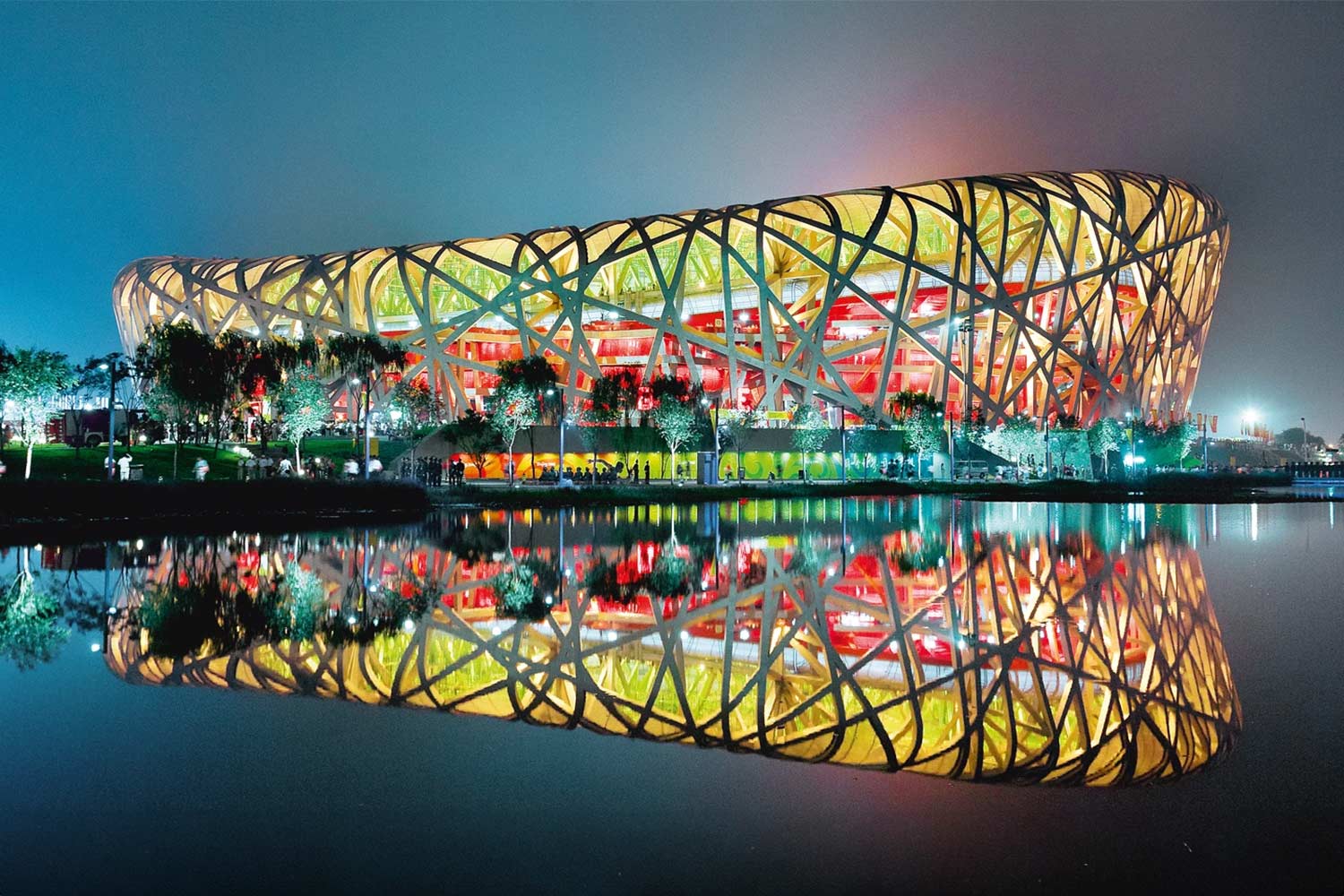

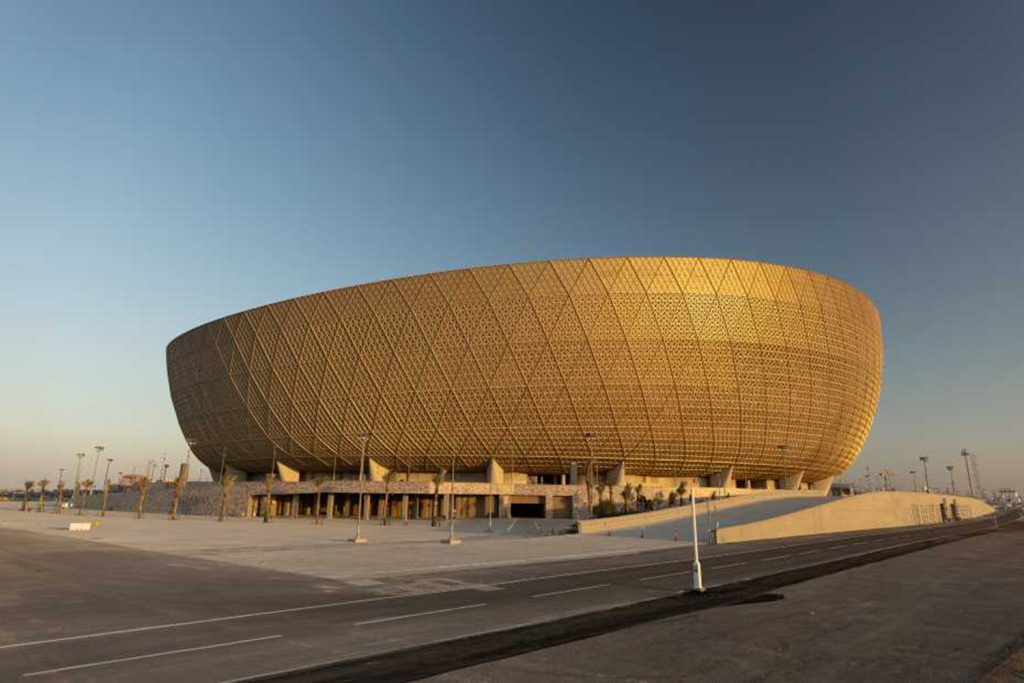



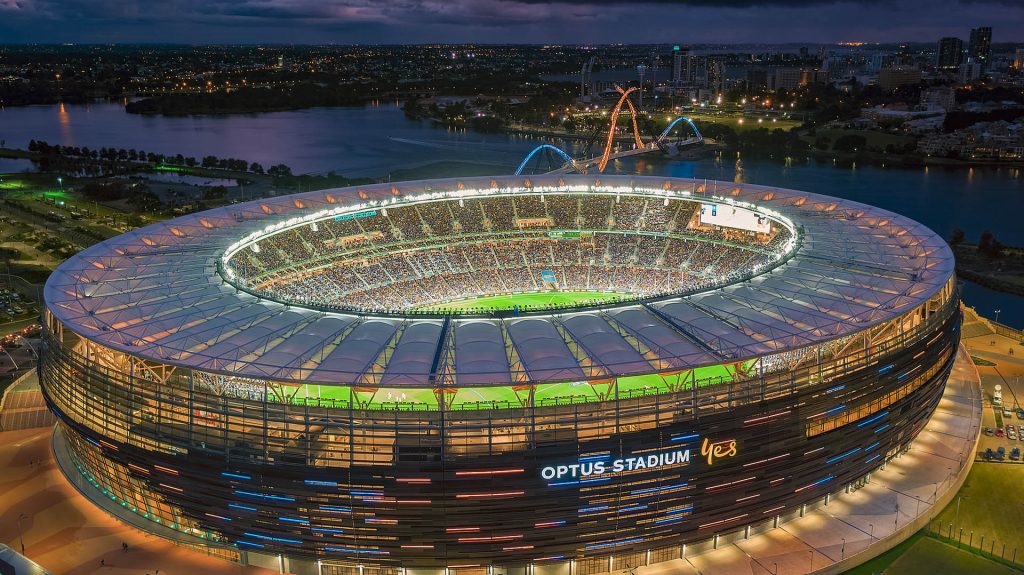

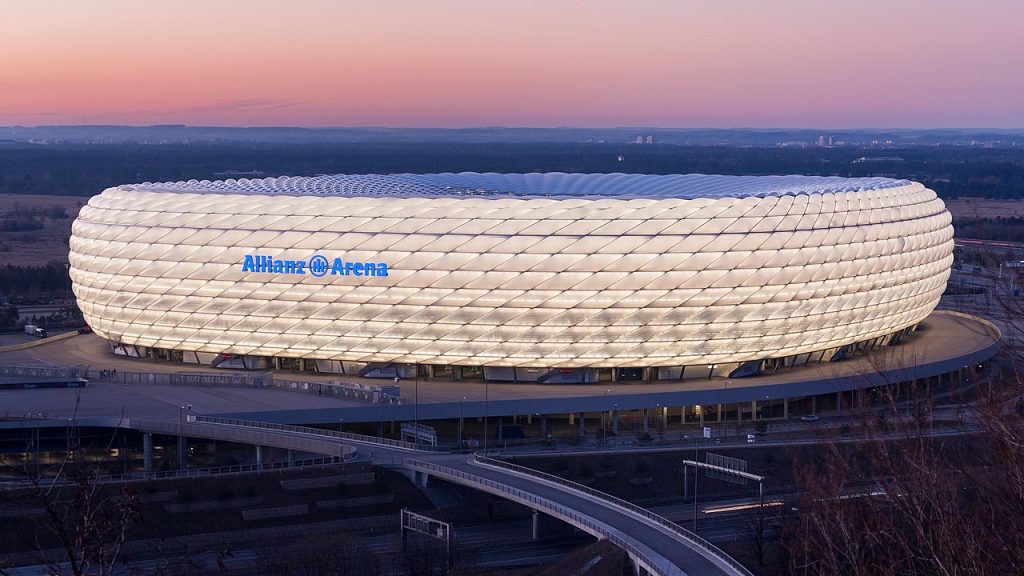





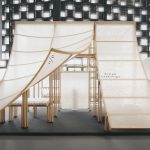









Leave a comment